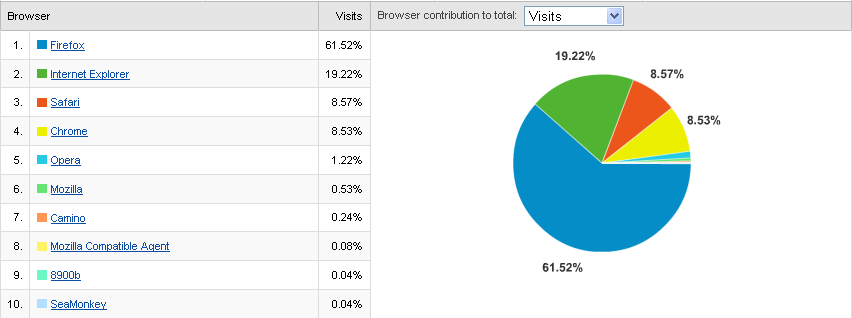 Image via CrunchBaseGoogle Chrome was released about a month ago. A lot has been said about the new browser, with mixed reviews all around. I had a review of my own, that was more of an explanation of what Google looked to be planning. So, what happened after the initial hype? Well, I tried using Chrome as my main browser for about two weeks. As a browser, Chrome is OK. The real problem is that I need my plugins. Until Chrome gets a plugin model similar to FireFox, it will just continue to be an also-ran.
Image via CrunchBaseGoogle Chrome was released about a month ago. A lot has been said about the new browser, with mixed reviews all around. I had a review of my own, that was more of an explanation of what Google looked to be planning. So, what happened after the initial hype? Well, I tried using Chrome as my main browser for about two weeks. As a browser, Chrome is OK. The real problem is that I need my plugins. Until Chrome gets a plugin model similar to FireFox, it will just continue to be an also-ran.
However, one item that I did like was the application shortcut. I have been using shortcuts for GMail, Google Reader and Remember The Milk (RTM). Because I do not want to use Chrome as my main browser, Google Reader as a shortcut became a problem. I open a large number of feed items from Reader for further review in a separate tab. If that tab is not FireFox, then I am missing my plugins, and I hate not having my plugins. Having GMail as a separate shortcut has been a fairly nice experience. I do miss my RTM for GMail extension a little, but that is offset by RTM having its own shortcut. The lack of browser “chrome” does give GMail a very nice feel to it, just not quite a desktop application yet.
![]() Image of RTMThe big winner in the Chrome game was Remember The Milk. Even though the main site describes Chrome as an unsupported browser, I am not having any problems. I absolutely adore RTM as a shortcut. Having RTM as a separate application is fantastic, and having a Google Gears enabled application within Chrome is really fast. Even if I decide to drop Chrome from my usage, the RTM shortcut will be sticking around.
Image of RTMThe big winner in the Chrome game was Remember The Milk. Even though the main site describes Chrome as an unsupported browser, I am not having any problems. I absolutely adore RTM as a shortcut. Having RTM as a separate application is fantastic, and having a Google Gears enabled application within Chrome is really fast. Even if I decide to drop Chrome from my usage, the RTM shortcut will be sticking around.
What About My Readers?
Obviously, my readers have a heavy technical bias. This would be more slanted than most technical news sites as well because they have a larger audience and will be getting views from a larger demographic than this blog. GigaOm posted their readers usage of browsers yesterday and found that Chrome only had 5.5% of the browser share. The other major browsers had an interesting spread as well, with FireFox at 43%, Internet Explorer at 37.9%, and Safari at 8.9%. My readers are somewhat different than theirs.
As you can see, Chrome has almost the same percentage as Safari. When I had initially checked Chrome usage one week after launch, it only had about 10% of usage, so this number looks fairly stable. I am curious whether the initial adoption rate will change any time soon. Given what technology people are like, I would think that the addition of requested features like plugins will drive a lot of adoption, as well as making Chrome natively available on Macs and Linux boxes. So, for now we must wait and see what Google has up its’ sleeve.


![Reblog this post [with Zemanta]](https://i0.wp.com/img.zemanta.com/reblog_c.png)